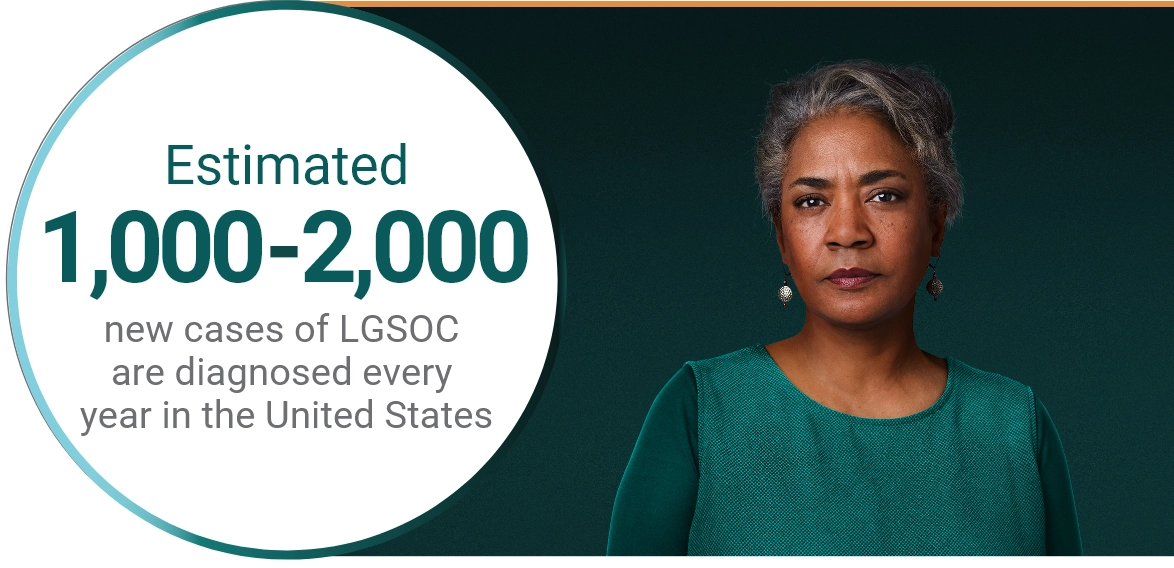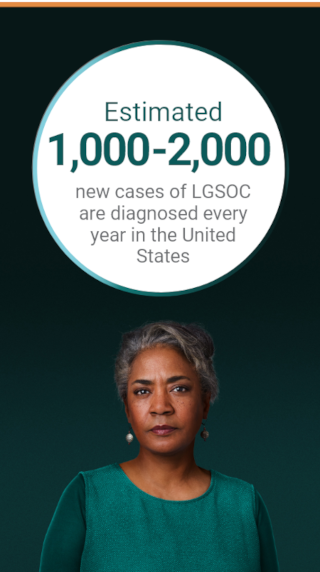
Low-Grade Serous Ovarian Cancer (LGSOC) and Its Symptoms
Low-Grade Serous Ovarian Cancer (LGSOC) and Its Symptoms
Low-grade serous ovarian cancer is a serious disease that can be seriously misunderstood.
Low-grade serous ovarian cancer (also known as LGSOC) is a rare type of cancer. It is distinct from the more common high-grade serous ovarian cancer (also known as HGSOC) and grows and spreads more slowly. LGSOC is likely to come back after initial treatment.
This site was created to be your go-to source for information about LGSOC. It includes a range of resources to help address a variety of needs specific to people with LGSOC.
Bookmark this site and come back often to stay up to date on LGSOC.
What is low-grade serous ovarian cancer?
- Many people with LGSOC are diagnosed in their 40s, but we know that doctors have treated people as young as 14 years old and as old as 79 years old
- LGSOC is a serious disease that is likely to be diagnosed when it has already spread outside of the ovaries
- 85% of people with LGSOC will have their cancer come back
What is low-grade serous ovarian cancer?
- Many people with LGSOC are diagnosed in their 40s, but we know that doctors have treated people as young as 14 years old and as old as 79 years old
- LGSOC is a serious disease that is likely to be diagnosed when it has already spread outside of the ovaries
- 85% of people with LGSOC will have their cancer come back
How common is a diagnosis of low-grade serous ovarian cancer?
- 5% to 10% of all serous ovarian cancers are LGSOC

- Some of the symptoms of LGSOC are similar to other cancers and other diseases, like irritable bowel syndrome (IBS). This, combined with how rare the cancer is, may make LGSOC difficult to diagnose and not all doctors may have experience treating it.
How common is a diagnosis of low-grade serous ovarian cancer?
- 5% to 10% of all serous ovarian cancers are LGSOC

- Some of the symptoms of LGSOC are similar to other cancers and other diseases, like irritable bowel syndrome (IBS). This, combined with how rare the cancer is, may make LGSOC difficult to diagnose and not all doctors may have experience treating it.
What are the symptoms of low-grade serous ovarian cancer?
The symptoms of LGSOC are “SERIOUS”.
Stomach bloating
Eating less because you feel full
Repeated changes to bowel movements
Intense back and pelvic pain
Ongoing for up to 2 weeks
Urgent need to urinate
Stomach pain
Some of the symptoms of LGSOC are the same as other ovarian cancers and other diseases, like irritable bowel syndrome (IBS).*
*This list is not exhaustive, as these are not all of the symptoms of LGSOC. Discuss any/all symptoms that you feel may be related to LGSOC with your doctor.
How is low-grade serous ovarian cancer different from high-grade serous ovarian cancer?
Both LGSOC and HGSOC are likely to come back after treatment. Other than that, they are like night and day.



